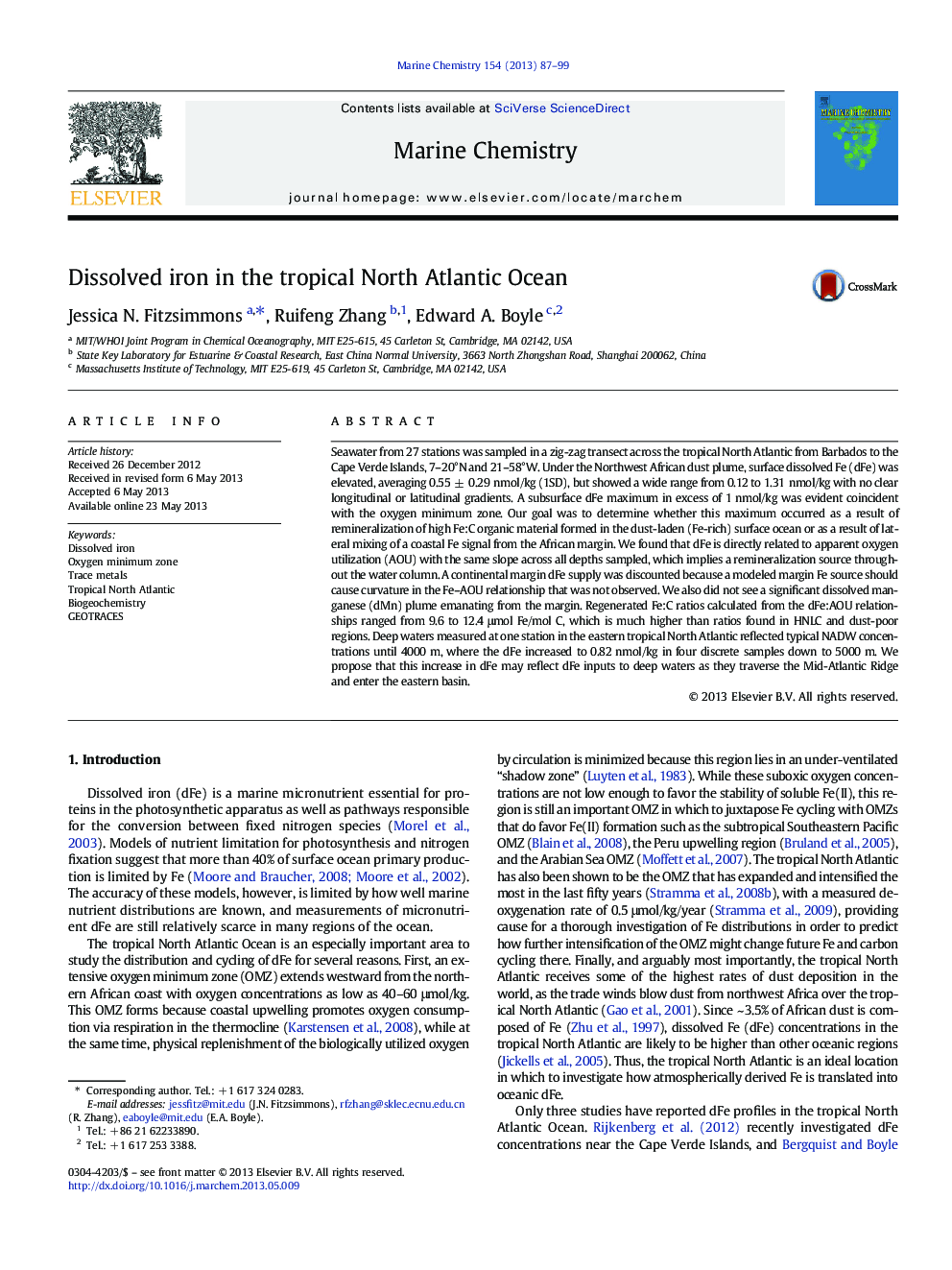| Article ID | Journal | Published Year | Pages | File Type |
|---|---|---|---|---|
| 1261422 | Marine Chemistry | 2013 | 13 Pages |
•We show dissolved iron from 27 stations in the tropical North Atlantic to 1000 m.•dFe was 1.0–1.5 nmol/kg in the OMZ and was correlated with AOU across all depths.•Fe/AOU correlation, absence of OMZ Mn max, and Fe model suggest a single Fe source.•Remineralization drives dFe in OMZ, not lateral mixing/advection of coastal dFe.•Fe/C ratios were 3 × the ratios in the HNLC Pacific.
Seawater from 27 stations was sampled in a zig-zag transect across the tropical North Atlantic from Barbados to the Cape Verde Islands, 7–20°N and 21–58°W. Under the Northwest African dust plume, surface dissolved Fe (dFe) was elevated, averaging 0.55 ± 0.29 nmol/kg (1SD), but showed a wide range from 0.12 to 1.31 nmol/kg with no clear longitudinal or latitudinal gradients. A subsurface dFe maximum in excess of 1 nmol/kg was evident coincident with the oxygen minimum zone. Our goal was to determine whether this maximum occurred as a result of remineralization of high Fe:C organic material formed in the dust-laden (Fe-rich) surface ocean or as a result of lateral mixing of a coastal Fe signal from the African margin. We found that dFe is directly related to apparent oxygen utilization (AOU) with the same slope across all depths sampled, which implies a remineralization source throughout the water column. A continental margin dFe supply was discounted because a modeled margin Fe source should cause curvature in the Fe–AOU relationship that was not observed. We also did not see a significant dissolved manganese (dMn) plume emanating from the margin. Regenerated Fe:C ratios calculated from the dFe:AOU relationships ranged from 9.6 to 12.4 μmol Fe/mol C, which is much higher than ratios found in HNLC and dust-poor regions. Deep waters measured at one station in the eastern tropical North Atlantic reflected typical NADW concentrations until 4000 m, where the dFe increased to 0.82 nmol/kg in four discrete samples down to 5000 m. We propose that this increase in dFe may reflect dFe inputs to deep waters as they traverse the Mid-Atlantic Ridge and enter the eastern basin.
